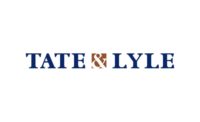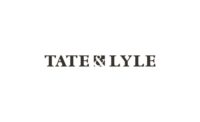Tate & Lyle PLC has launched a fiber calculator to help raise awareness to the population’s "fiber gap."
Whilst the health benefits of fiber are becoming more widely known, intake remains low. New consumer research, conducted by Tate & Lyle amongst UK adults, has found that more than a third (36%) of people think they are not consuming enough fiber.
The survey revealed that 32% of consumers didn’t know the UK government’s daily fiber recommendation of 30g, with 1 in 10 (12%) thinking they recommend as little as 15g a day.
However, appetite for education on the subject was high, with 87% of people keen to know if they were getting the daily recommended amount of fiber in their diet, and the majority (94%) prepared to make changes to their diet to increase their fiber intake.
The survey also found that whilst many consumers know that eating fiber helps keep bowel function regular (65%) and improves digestive health (70%) far fewer understand that getting the right amount of fiber is highly beneficial for wider health and wellbeing, including lowering your risk of cardiovascular disease, type 2 diabetes, and certain cancers (40%).
The new fiber calculator tool from Tate & Lyle, created in partnership with the British Nutrition Foundation, asks the user eight questions to assess their current eating habits, before giving them an overall fiber score, and offering simple tips and personalized advice about how to increase their fiber consumption.
Dr Kavita Karnik, global head, nutrition & regulatory affairs at Tate & Lyle, said: “We’re delighted to launch our new fiber calculator and hope the availability of a tool like this helps raise awareness amongst consumers of their 'fiber gap' and how to improve their daily intake of fiber."
“We know that reaching the daily fiber recommendation is challenging, and for most people it is difficult to do so without exceeding their recommended calorie intake. This is where reformulation of the everyday products like cereal bars, yoghurt, and sports drinks, can be really effective in improving nutritional intakes.”
The research also uncovered opportunities for food and drink manufacturers to provide more information to consumers on the amount of fiber in their products to prompt them to make healthier choices in the supermarket. 60% of people are interested in eating more foods fortified with fiber, but only 1 in 10 (11%) consider the fiber content of food when doing their food shop currently.
Stereotypes around fiber still exist, with consumers associating the words bland (10%) and stodgy (9%) with fiber. However, there are plenty of simple, tasty and everyday swaps, including swapping white rice for brown rice, adding lots of vegetables and pulses to pasta sauces and eating potatoes in their skins.
Sara Stanner, science director at the British Nutrition Foundation added: “We know that many people need to eat more fiber to support better health, but often awareness around how to improve diets is lacking and healthy behavior change is challenging. This is why a tool like this new fiber calculator can be so helpful in raising awareness and educating people on how they can improve their diets and overall health.”
Tate & Lyle has launched this calculator as part of their Gut Health Campaign, which aims to raise consumer understanding of the benefits of fiber.
For more information and tips on how to increase fiber intake, visit tateandlyle.com/guthealth




